Nose piercings are a popular form of self-expression, but for many individuals considering or undergoing this procedure, a pressing question often arises: How long does it take for a nose piercing to heal? While the average healing time is typically 2 to 4 months, several factors can influence this timeline. Factors such as proper aftercare, individual healing capabilities, and the location of the piercing can all impact the healing process. Understanding these factors is crucial for ensuring a smooth and successful healing journey. We will delve into these details further at the end of this article to provide comprehensive insights into the healing process of nose piercings.
What is Nose Piercing?
Nose piercing is a form of body modification in which a small hole is created in the skin or cartilage of the nose to insert jewelry. This practice dates back thousands of years and has been observed in various cultures around the world, often carrying cultural, religious, or aesthetic significance. Nose piercings can be performed on different parts of the nose, including the nostril, septum, or bridge, and can be adorned with a variety of jewelry styles, such as studs, rings, or hoops.
Types of Nose Piercings
Here’s a detailed overview of different types of nose piercings:
1. Nostril Piercing:

- This is the most common type of nose piercing, where the skin or cartilage on the side of the nostril is pierced.
- The piercing can be placed on either nostril, and the jewelry options include studs, screws, rings, or hoops.
- Nostril piercings can be positioned anywhere along the curve of the nostril, allowing for variations in placement and style.
2. Septum Piercing:
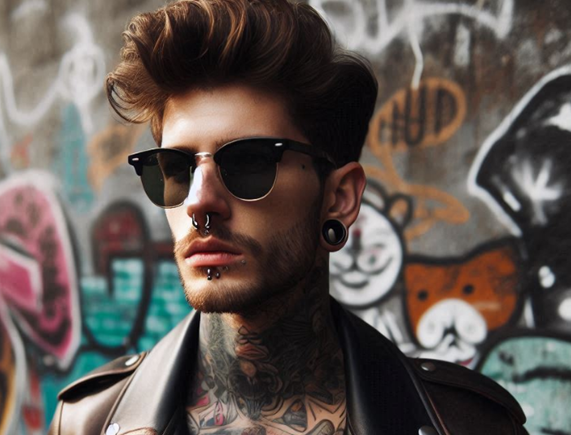
- A septum piercing passes through the thin strip of skin, called the septum, that divides the nostrils.
- Jewelry for septum piercings typically includes circular barbells, captive bead rings, or septum clickers.
- Septum piercings can be flipped up into the nostrils to conceal them if desired, making them versatile for different occasions.
3. Bridge Piercing:

- Also known as an “Erl” or “Earl” piercing, the bridge piercing is located on the bridge of the nose, between the eyes.
- It involves piercing horizontally through the skin on the bridge, which requires precise placement by an experienced piercer.
- Common jewelry options for bridge piercings include straight barbells, surface bars, or custom-designed pieces.
4. High Nostril Piercing:
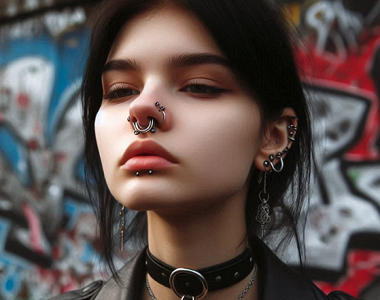
- A variation of the standard nostril piercing, the high nostril piercing is placed higher up on the nostril compared to traditional nostril piercings.
- It adds visual interest and can complement existing nostril piercings, offering a unique and personalized look.
- Jewelry options for high nostril piercings are similar to those for standard nostril piercings and include studs, screws, rings, or hoops.
5. Nasallang Piercing:

- The nasallang piercing is a complex piercing that passes through both nostrils and the septum in a single straight line.
- It requires precise placement by an experienced piercer and is typically done with a straight barbell.
- Nasallang piercings offer a unique and bold look, but they require careful consideration due to their complexity and potential for discomfort during healing.
These are some of the main types of nose piercings, each offering its own aesthetic appeal and placement options. It’s essential to consult with a professional piercer to determine the best type of piercing for your anatomy, preferences, and lifestyle.
Nose Piercing Procedure
The nose piercing procedure involves several steps to ensure proper placement and minimize discomfort. Here’s a detailed overview of the process:
1. Consultation:
- Before the piercing, you’ll typically have a consultation with your piercer to discuss your desired placement, jewelry options, and any concerns you may have.
- Your piercer will assess your anatomy to determine the best location for the piercing and discuss aftercare instructions.
2. Preparation:
- The piercing area is cleaned and sterilized using antiseptic solutions to minimize the risk of infection.
- Your piercer will mark the precise placement of the piercing using a surgical pen or marker, taking into account your anatomy and preferences.
3. Piercing:
- Once the placement is finalized, your piercer will use a sterile needle to create the piercing.
- For nostril piercings, the needle is inserted through the skin or cartilage of the nostril, while septum piercings pass through the thin strip of skin between the nostrils.
- The piercing process is typically quick, with minimal discomfort lasting only a few seconds.
4. Jewelry Insertion:
- After the piercing is made, your piercer will quickly insert the jewelry into the newly created hole.
- Common jewelry options for nose piercings include studs, screws, rings, or hoops, depending on the type of piercing and your preferences.
5. Aftercare Instructions:
- Once the jewelry is in place, your piercer will provide you with detailed aftercare instructions to promote healing and prevent infection.
- This may include cleaning the piercing with saline solution or mild soap, avoiding touching or rotating the jewelry, and avoiding certain activities that may irritate the piercing.
6. Follow-Up:
- Your piercer will schedule a follow-up appointment to check on the healing progress of your piercing and make any necessary adjustments to the jewelry.
- It’s essential to follow all aftercare instructions and attend any follow-up appointments to ensure the proper healing of your nose piercing.
By following these steps and adhering to aftercare instructions, you can ensure a successful and comfortable nose piercing experience. If you have any concerns or experience unusual symptoms during the healing process, don’t hesitate to contact your piercer for guidance and support.
Precaution for Nose Piercing
Taking proper precautions is crucial to ensure the success of your nose piercing and minimize the risk of complications. Here are some essential precautions to follow:
- Choose a reputable piercer: Select a professional and experienced piercer who follows strict hygiene practices and uses sterile equipment. Research reviews and ask for recommendations to find a trusted piercer.
- Maintain proper hygiene: Keep the piercing area clean and dry to prevent infection. Wash your hands thoroughly before touching the piercing, and avoid touching it unnecessarily to reduce the risk of introducing bacteria.
- Follow aftercare instructions: Your piercer will provide you with specific aftercare instructions tailored to your piercing. Follow these instructions carefully, including cleaning the piercing with saline solution or mild soap, and avoiding harsh chemicals or products near the piercing.
- Avoid changing jewelry too soon: Wait until your piercing is fully healed before changing the jewelry. Changing it too soon can disrupt the healing process and increase the risk of infection.
- Protect the piercing: Avoid activities that may irritate or damage the piercing, such as excessive touching, picking, or sleeping on your face. Be cautious when participating in sports or activities that may expose the piercing to impact or friction.
- Watch for signs of infection: Keep an eye out for symptoms of infection, such as increased pain, redness, swelling, or discharge. If you notice any signs of infection, contact your piercer or a healthcare professional for guidance.
- Avoid swimming: Avoid swimming in pools, hot tubs, or natural bodies of water until your piercing is fully healed to reduce the risk of infection.
- Protect from sun exposure: Limit exposure to direct sunlight and tanning beds, as UV rays can fade the tattoo and increase the risk of skin damage.
By following these precautions and taking good care of your nose piercing, you can promote healing and reduce the risk of complications. If you have any concerns or experience any problems with your piercing, don’t hesitate to seek guidance from your piercer or a healthcare professional.
If anything goes wrong what will happen
If anything goes wrong with your nose piercing, it’s essential to address it promptly to prevent further complications. Here are some potential issues that may arise and what to do:
1. Infection:
Signs of infection include increased pain, redness, swelling, warmth, or discharge from the piercing site. If you suspect an infection, seek medical attention immediately. Your healthcare provider may prescribe antibiotics to treat the infection and prevent it from spreading.
2. Migration or Rejection:
Sometimes, the body may reject the piercing, causing it to move or migrate from its original placement. Signs of migration or rejection include the piercing becoming shallower, the jewelry appearing closer to the surface of the skin, or the skin around the piercing becoming thinner. If you notice these signs, consult your piercer or a healthcare professional for advice.
3. Keloids or Scarring:
Some individuals may develop keloids or excessive scarring around the piercing site. Keloids are raised, thickened areas of scar tissue that may be itchy or uncomfortable. If you notice keloid formation or excessive scarring, consult a dermatologist for treatment options.
4. Allergic Reactions:
If you experience itching, redness, or irritation around the piercing site, you may be allergic to the jewelry material. Common allergens include nickel, cobalt, or certain metals. Consult your piercer to switch to hypoallergenic jewelry or seek medical advice if the symptoms persist.
5. Embedding:
In some cases, the jewelry may become embedded in the skin, causing discomfort or difficulty removing it. If you’re unable to remove the jewelry yourself, seek assistance from your piercer or a healthcare professional to avoid causing further injury.
It’s essential to monitor your nose piercing regularly for any signs of complications and to seek professional help if needed. Prompt attention to issues can help prevent them from worsening and ensure the proper healing of your piercing.
Aftercare for Nose Piercing
Proper aftercare is essential to promote healing and prevent infection for a nose piercing. Here’s a comprehensive guide to aftercare:
1. Cleanliness:
- Wash your hands thoroughly with antibacterial soap before touching your piercing.
- Use a saline solution or a gentle, fragrance-free soap to clean the piercing twice a day.
- Soak a clean cotton ball or pad in saline solution and gently clean around the piercing, removing any crust or discharge.
2. Avoid Irritants:
- Avoid swimming in pools, hot tubs, or natural bodies of water until the piercing is fully healed to prevent infection.
- Avoid using harsh skincare products, makeup, or hair products near the piercing site, as they can irritate the skin and delay healing.
- Refrain from touching or rotating the jewelry unnecessarily, as this can introduce bacteria and prolong healing.
3. Healing Environment:
- Maintain a clean and dry environment around the piercing to promote healing.
- Avoid sleeping on your face or putting pressure on the piercing, as this can cause irritation and delay healing.
- Wear loose-fitting clothing around the nose area to prevent friction and irritation.
4. Watch for Signs of Infection:
- Keep an eye out for signs of infection, such as increased redness, swelling, pain, warmth, or pus-like discharge.
- If you suspect an infection, seek medical attention promptly to prevent complications.
5. Healthy Lifestyle:
- Maintain a healthy lifestyle by eating a balanced diet, staying hydrated, and getting enough rest, as these factors can support the body’s natural healing process.
- Avoid smoking and excessive alcohol consumption, as they can impair healing and increase the risk of infection.
6. Follow-Up Care:
- Schedule follow-up appointments with your piercer to monitor the healing progress of your piercing.
- Seek guidance from your piercer or a healthcare professional if you have any concerns or experience unusual symptoms during the healing process.
By following these aftercare tips diligently, you can help ensure a successful and comfortable healing process for your nose piercing. If you have any questions or concerns about aftercare, don’t hesitate to reach out to your piercer or a healthcare professional for guidance.
How Long Does a Nose Piercing Take to Heal?
The healing time for a nose piercing can vary depending on several factors, including the type of piercing, your body’s healing response, and how well you care for the piercing. On average, a nose piercing takes approximately 4 to 6 months to fully heal, although some people may experience complete healing in as little as 2 to 3 months, while others may take longer.
Here’s a general timeline of the healing process for a nose piercing:
1. Initial Healing (0-4 weeks):
During the first few weeks after getting pierced, you may experience mild swelling, redness, and tenderness around the piercing site. This is normal and part of the body’s natural healing response. You’ll need to clean the piercing regularly with saline solution or a mild soap as directed by your piercer to prevent infection.
2. Early Healing (4-8 weeks):
By the end of the first month, you should notice a decrease in swelling and discomfort. The initial wound may begin to close, and the skin around the piercing may start to toughen up. Continue to clean the piercing twice a day and avoid touching or rotating the jewelry to prevent irritation.
3. Intermediate Healing (8-12 weeks):
Around 2 to 3 months after getting pierced, the majority of the healing should be complete. The piercing site may still be slightly tender, but any redness or swelling should have subsided. At this stage, you can gradually reduce the frequency of cleaning to once a day or as needed.
4. Final Healing (12-24 weeks):
Complete healing of the nose piercing typically occurs within 4 to 6 months after the initial piercing. By this time, the piercing should feel comfortable and no longer sensitive to the touch. However, it’s essential to continue practicing good hygiene and avoiding excessive manipulation of the piercing until it is fully healed.
It’s important to note that individual healing times may vary, and some people may experience complications or delays in healing. If you notice any signs of infection, excessive swelling, or prolonged discomfort, consult your piercer or a healthcare professional for guidance. Additionally, refrain from changing or removing the jewelry prematurely, as this can disrupt the healing process and increase the risk of complications.
FAQs about Nose Piercing
Here are some frequently asked questions (FAQs) about the healing process for nose piercings:
Wait until your nose piercing is fully healed before changing the jewelry, which typically takes about 4 to 6 months.
Your nose piercing is likely healed if there is no more tenderness, redness, or swelling, and the piercing feels comfortable to touch.
Proper aftercare practices, such as cleaning the piercing regularly with saline solution and avoiding irritants, can help promote faster healing for a nose piercing.
The pain from a nose piercing typically subsides within a few days to a couple of weeks after the piercing procedure.
Nose piercings can be prone to infection if proper aftercare practices are not followed, but with diligent care, the risk can be minimized.
It’s recommended to wait until your nose piercing is fully healed before changing the jewelry to reduce the risk of complications. Changing the jewelry too soon can irritate the piercing and prolong the healing process.
It’s best to avoid activities that may expose the piercing to excessive moisture, dirt, or trauma until it is fully healed to reduce the risk of infection or irritation.
Signs of infection include increased redness, swelling, pain, warmth, or pus-like discharge from the piercing site. If you suspect an infection, seek medical attention promptly.
Yes, age restrictions for nose piercings vary depending on local regulations and piercing studios. In many places, individuals under 18 may need parental consent, while some studios may have their own age policies regardless of consent.
Conclusion:
Understanding the healing process and following appropriate aftercare instructions are crucial for a successful nose piercing. By being mindful of potential complications and knowing when to seek medical advice, you can ensure your piercing heals properly and remains healthy. Always consult with a professional piercer or healthcare provider if you have any concerns or questions about your nose piercing.






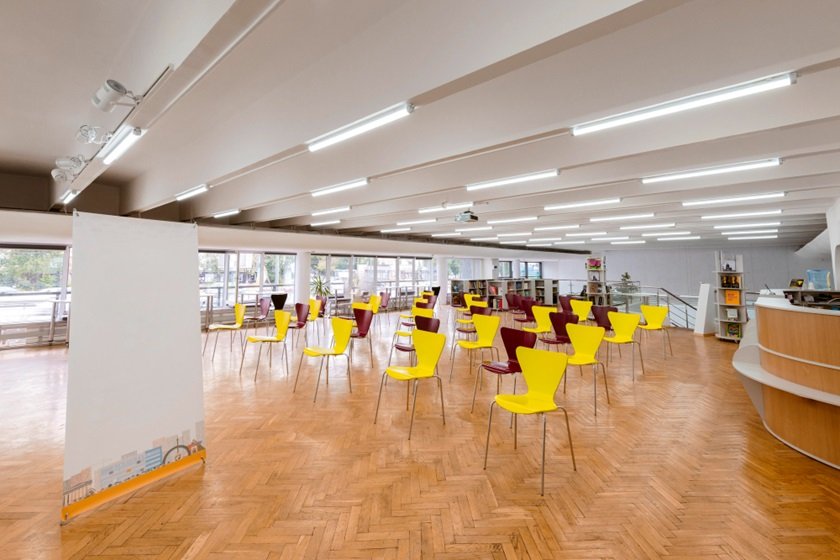

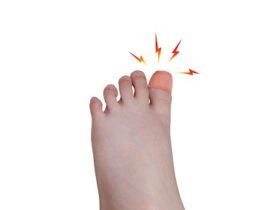
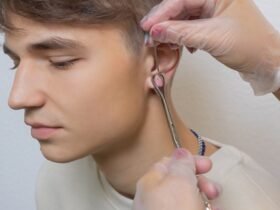
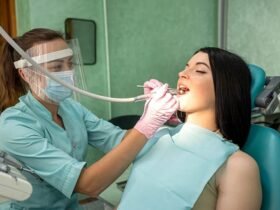
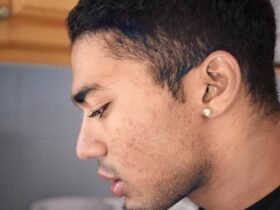
Got a Questions?
Find us on Socials or Contact us and we’ll get back to you as soon as possible.